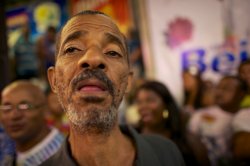Sounds like you struck a good deal selling the 35mm!

I don't claim to be an expert, but be careful not to confuse/conflate depth-of-field, bokeh, and sharpness. You can have a sharp image with or without a shallow depth-of-field, and bokeh generally refers to the quality of the out-of-focus portions of the image (usually the blurred background).
In terms of isolating your subject from the background, there are a number of variables that come into play, including some which are governed or limited by the lens (i.e., focal length, wider aperture, etc.) and some which are not (i.e., the relative distances between the camera, the subject, and the background). As an extreme example, if you photograph a person who is leaning against a wall from across the room, you probably will not be able to blow the background out of focus regardless of what lens you are using.
If your space is limited -- shooting indoors, for example -- and your goal is to isolate your subject, you might prefer to use a wider lens (say, the 35mm) with your subject closer to you in order to allow for room between your subject and the background. If you use a narrower lens (say, the 50mm), you might not have enough room to back up (to account for the narrower field of view), so your subject will need to back up, thus reducing the distance behind them to the background. All else being equal (i.e., shooting at the same aperture), you might find that you are able to "better" isolate your subject under those circumstances with the 35mm.
And as I mentioned before, a lot depends on the type of shot you are looking to make. For what it's worth, I use both the 35mm 1.8G and 50mm 1.8D with my D7000. I tend to use the 35mm more, especially indoors, but that's me. You may find that the 50mm suits your needs better.
The bottom line is that there is no "right" lens for everyone and for every situation.



